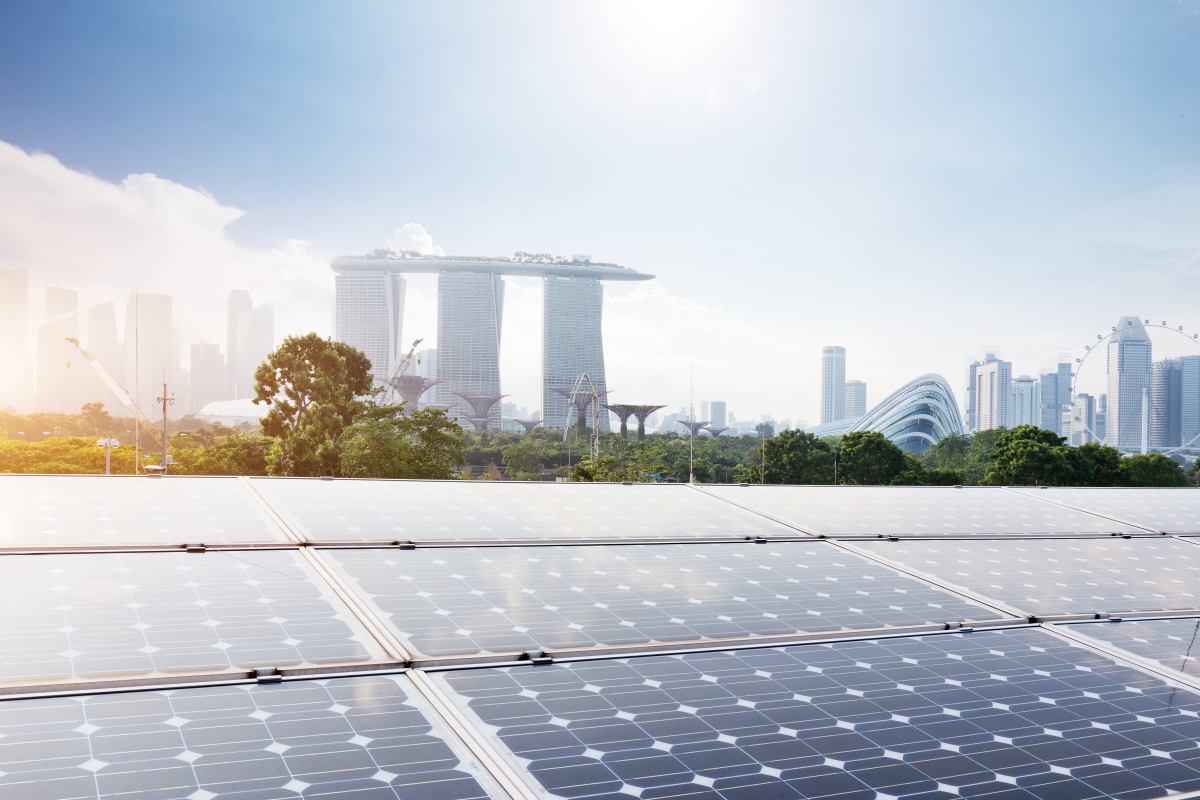Singapore is pushing ahead with its ambitious climate targets. As an important step to enable the transition to a low-carbon future, Singapore now closed its first contract to import renewable energy. Singaporean energy company Keppel Electric already started importing hydroelectric power from an electricity firm in Laos in June.
Earlier this year, the island country decided to raise the carbon tax levels progressively from 2024. “This will support our climate ambition and secure a greener and more sustainable living environment for future generations while being economically competitive in a low-carbon future,” a statement by the National Climate Change Secretariat (NCCS) read.
Singapore set the goal to achieve net-zero carbon emissions by or around 2050. However, to achieve these goals the island state needs to rely on imports since its renewable energy options are very limited.
According to the Energy Market Authority of Singapore (EMA), the country has no hydro resources and wind speed, and the mean tidal range is low. Even geothermal energy is not economically viable. Thus, located in the tropical sun belt, solar energy becomes the most viable renewable energy option. According to the EMA, Singapore receives an average solar irradiance of 1,580 kWh/m2 annually.
A white paper released by industry experts in 2014 showed that alternative energy has the potential to meet about 8% of the city-state’s peak power demand by 2025. The paper notes that Singapore’s renewable energy capacity may get a boost by efficiently utilising the available solar, biomass and biogas resources for power generation.
Solar, Singapore’s most viable renewable energy
With solar energy being the most viable renewable energy, Singapore plans to implement at least 2 gigawatt-peak of solar energy by 2030 – equivalent to powering nearly 350,000 households annually. According to Singapore’s Minister for Trade and Industry, Gan Kim Yong, the city-state is well on track to reaching this goal. “Solar installed capacity increased over eight-fold from 2015 to over 500 megawatt-peak (MWp) in the second quarter of 2021,” Gan wrote in a parliament Q&A.
“In addition, we are also exploring innovative ways of deploying solar systems on spaces such as water bodies, temporary vacant land and sheltered walkways,” wrote Gan. As an example, he named the Tengeh Reservoir, Singapore’s first large-scale floating solar system, “which at 60 MWp, is one of the world’s largest inland floating solar farms”.
Furthermore, the Government of Singapore is investing in research and development, in addition to test-bedding to expand the performance of solar PV systems and usher in innovative ways of integrating solar energy systems into the urban environment.
However, solar panel installations also have their limitations given the small size of the city-state (719 km²/278 mi²). Thus, the import of renewable energy is key for Singapore.
Singapore banking on imports
In October 2021, Singapore announced plans to import up to 4 gigawatts (GW) of low-carbon electricity by 2035.
The power purchase agreement with Laos now is the first cross-border power trade of renewable energy into Singapore. Up to 100 megawatts (MW) of renewable hydropower are imported from Laos via Thailand and Malaysia using existing interconnections. According to a local report, this is equivalent to about 1.5 per cent of Singapore’s peak electricity demand in 2020.
“This marks a historic milestone as the first multilateral cross-border electricity trade involving four ASEAN countries, and the first renewable energy import into Singapore,” wrote the EMA.
Another huge project in the making is a pipeline from Australia to Singapore. The so-called Australia-Asia Power Link (AAPowerLink) is an ambitious project by Australian startup Sun Cable. It aims to connect Singapore via a 4,200km subsea cable to a solar farm about 800km south of Darwin.
According to Sun Cable, construction for the world’s largest solar farm, covering 12,000ha with solar panel arrays will start in 2024, with electricity supplied first to Darwin in 2027 and full operations by 2029. The project is said to cover up to 15% of Singapore’s electricity needs.










 Australia
Australia China
China India
India Indonesia
Indonesia Japan
Japan Malaysia
Malaysia Philippines
Philippines Singapore
Singapore South Korea
South Korea Taiwan
Taiwan Thailand
Thailand Vietnam
Vietnam Germany
Germany Hong Kong
Hong Kong USA
USA Switzerland
Switzerland Singapore
Singapore
 United Kingdom
United Kingdom








